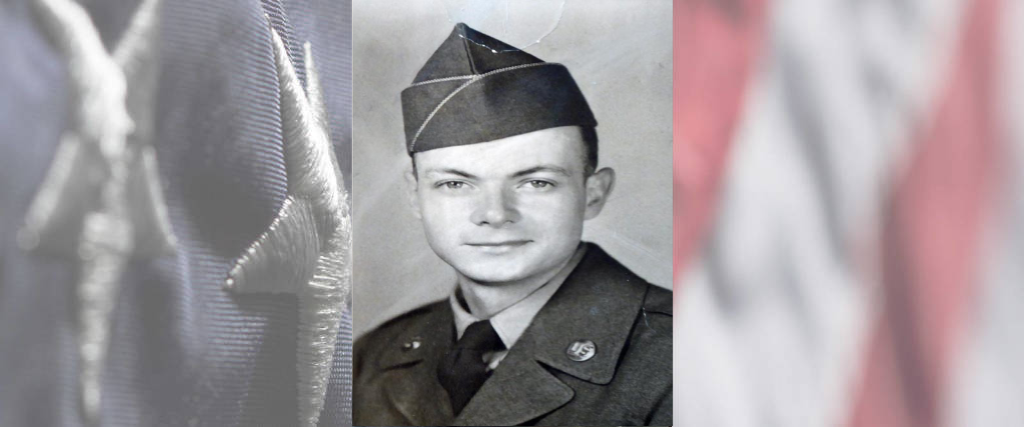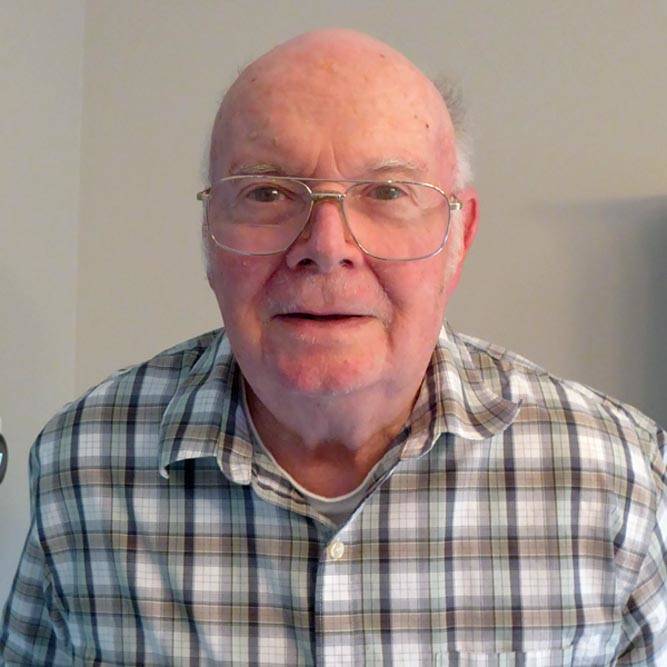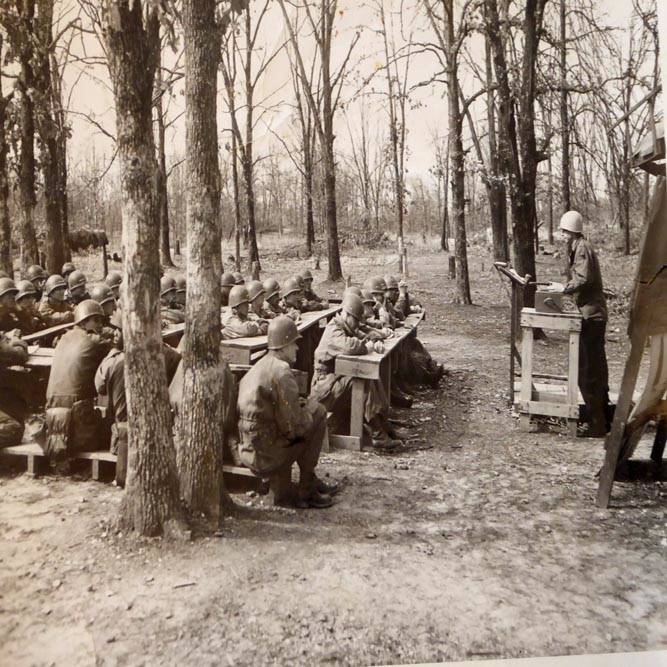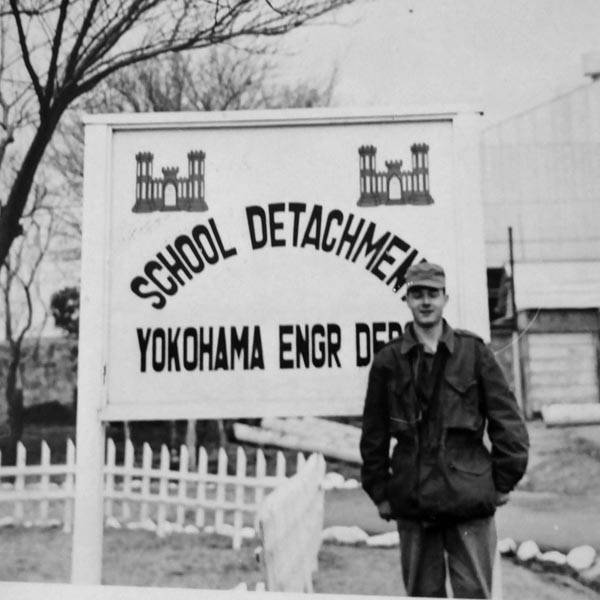U.S. Army Korean War Lemont, IL Flight date: 07/11/18
By Nancy Angel, Honor Flight Chicago Veteran Interviews Volunteer
James (Jim) Connellan graduated from St. Rita High School and went to work at Lanzit Corrugated Box Company. He had been classified 1A on his draft card and could be drafted at any time. That time came in September, 1952. He was sent to Fort Leonard Wood in Missouri for Basic Training. He went through both infantry Basic and engineer Basic Training. In the infantry training, he remembers going through the dismounted drills and learning to use weapons including machine guns and tanks.
After completing Basic Training, Jim was assigned to the cadre at Leonard Wood which meant he could have stayed on as an instructor there for two years. He worked as an instructor for a short time, teaching about bomb detection among other topics, but didn’t care for it and requested to be transferred overseas. He was sent by train to Seattle and on to Fort Lewis, Washington where he waited for a Liberty ship to transport him to Japan. After a two week trip on the USS General William Mitchell to Yokohama, Japan, he was processed through Camp Drake. In Yokohama, he was sent to engineering school for eight weeks where he was trained as a spare parts specialist. He was among 28 men in the school; they attended 8 hours of training Monday through Friday and a half day on Saturday. They learned how to order and track parts and take inventory. Of course, this process was much more cumbersome in the days before computers. All of the parts had to be looked up and logged into big books. There were all kinds of parts for every type of machine, including many General Motors and International Harvester parts. In addition to all of the parts management skills, Jim had to learn to read and write numbers in Korean, since they would be sending parts all over Korea and had to include numbers in both English and Korean on the packaging.
Upon completion of engineering school, Jim took a train to Sasebo, Japan then a freighter to Pusan, Korea for his assignment to a spare parts company. Every morning, the soldiers lined up in a large warehouse awaiting their assignments. The men were assigned to certain sections, each of which had two GI’s and two local employees who were boys about 14 or 15 years old. They worked from 8:00 to 5:00, stopping for lunch, which usually consisted of C-rations. Their job was to fill orders by locating parts and equipment from throughout the factory and sending them out. He says that after a while, you just memorized where everything was kept in the warehouse and didn’t have to look it up. Jim recalls that sometimes they provided equipment and supplies to the Marine Corps which didn’t seem to be as well-supplied as the Army. When the Marines came to Jim’s company seeking parts, Jim provided them if he could since “we were all on the same side.” In the winter months it was very cold, even inside the warehouse, so Jim would keep his outfit of long-johns, a thick wool sweater, a jacket, mittens and a pile cap on all day. He also said that, even though they were nowhere near the combat zone, he had to carry a gun at work every day.
Being an engineer, Jim was in somewhat upgraded living quarters at the base in Pusan and stayed in a Quonset hut instead of a tent. It wasn’t exactly luxurious but, according to Jim, was “not bad.” The huts were buildings made of corrugated metal and housed about 10 men. There was no fan or air conditioning, but there were four windows, two on each side. In the cold winter months there was oil heat, which was much cleaner than the dirty, dusty coal heat they’d had in Basic Training. There wasn’t a great deal in the way of entertainment, but there was an NCO (non-commissioned officer) club on base where the men could go in their free time. Jim remembers that one of the guys in his hut was from Chicago and had the Chicago Tribune delivered. It was good to be able to keep up with the news from home, even if it was two weeks later. Another guy had a Zenith radio and was able to tune in to AFKN – Armed Forces Korean Network where the men would listen to PFC Eddie Fisher from San Francisco singing “Oh! My Pa-pa” and other popular hits.
Although the GIs’ living conditions were not as good as those at home, conditions were much better than those of the South Koreans in the local area, some of whom benefitted from the relative wealth of the GIs. There were many squatters immediately surrounding the Army camp. They had basically created a homeless camp, building lean-tos with roofs made of flattened aluminum cans. The GIs would help these people out by providing them with food and other items. The perimeter of the Army camp was guarded by ROK (Republic of Korea) troops and Jim and the other men got to know some of these Korean soldiers. Through their daily contact with their young Korean co-workers in the warehouse and with the guards, the GIs learned some Korean, and the Korean guards learned some English, so they were able to communicate. Sometimes the Korean soldiers asked the GIs for items that were difficult for them to get. Jim recalls that one Korean soldier frequently asked him and others for bars of soap. Jim says that either he was a really clean guy or, more likely, that he was selling the soap on the black market. The GIs also supported a local orphanage run by Maryknoll missionaries from Australia. The orphanage was just a couple of miles away from their camp, within walking distance. Jim recalls there were many children there. He and other GIs would give money and food and spend time there to support the orphans. Jim recalls a few other things about the area surrounding the Army camp: the K-9 airport nearby, the rice fields of Chinhae, and the “honey bucket man.” This was a local man who came around regularly with wooden “honey buckets” on a wagon to collect the waste from the latrines, which he would then use as fertilizer.
When Jim had completed his two years of service in September of 1954, he left Pusan and traveled by train to Incheon. He recalls that all of the windows in the train had been broken out, so it was a very cold train ride and he had to dress in very warm clothes. At the harbor in Incheon, the men were taken out on an LST (landing ship tank) from the shore to the Liberty ship, which they had to board by climbing up a rope ladder thrown over the side. Not exactly how most of us envision boarding a ship! The trip back to Seattle took 14 days and Jim was one of few men who didn’t get seasick. He was not immediately discharged, but was placed in the Reserves, although he never ended up having any assignments. He was eventually honorably discharged in 1960.
Back home in Illinois, Jim took advantage of the GI Bill and obtained a Bachelor’s degree in education at Northern Illinois University, and then went on to earn a Master’s degree in guidance and counseling. He worked in the Chicago Public School system for over 30 years, most of them at Bogen High School, initially as an Industrial Arts, Drafting and English teacher and later as a guidance counselor. In the meantime, he met his future wife Chris through a cousin and they married in 1965. They went on to have four children and eventually 10 grandchildren. Unfortunately Chris passed away shortly before Jim retired in 1995. Later, Jim met and married Eileen, to whom he’s been married for 10 years.
Thank you Jim for your dedicated service to your country during the Korean War. Enjoy your well-deserved day of honor in Washington, D.C.!






